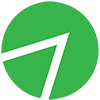The Introvert’s Guide to Networking as a Freelancer
Networking: One of those words that quickly sends shivers down an introvert’s spine. It implies awkward industry cocktails and beige conference centers packed with standing tables. Networking can feel impossible for freelancers who’d rather spend an afternoon at home.
But there is some good news: It’s possible for introverts to network without anxiety. Networking is useful because it connects you with clients and potential colleagues. And you can do it without going five drinks deep at a karaoke bar.
Use Twitter wisely
Social media has a bad reputation for good reasons, but it can be a medium to form valuable connections when used properly. Alan Henry, service editor at WIRED and author of the upcoming book Seen, Heard, and Paid: The New Work Rules for the Marginalized, said social networks can help you find clients — and friends.
“Find a social media platform you like that fits into your workflow and get into it,” Henry said. “Be your authentic self, too. Twitter is super popular with journalists and authors, and following someone you respect is always an ego boost for them. Facebook has tons of groups, and I’ve even seen writers groups on Instagram and TikTok.”
Henry also recommends using social media to find groups, organizations, or classes. You can often join an online group first to build up your comfort level before an in-person social event.
Build a LinkedIn profile
LinkedIn is not particularly fun. Many users post very little, if at all, and you’re unlikely to strike up a friendly conversation with another freelancer in the comments section. Still, clients often turn to LinkedIn. A strong profile can network for you, putting you in front of clients and peers you’ve never met.
Go for a concise, concrete focus on your freelance work. Don’t pad your introduction or work history with wordy explanations. List exactly what you’ve worked on, when you worked on it, and link to examples of your work whenever possible.
And update it! Set a monthly reminder to list new clients, accomplishments, and links to your most recent work. And most importantly: Mark yourself as “Open to work” — this profile feature will allow recruiters to find you more quickly and is able to do the heavy lifting of networking for you.
Conserve your energy at big events
Large networking events are the bane of every introvert, and some are unavoidable. However, you can make them less intimidating by approaching them on your own terms.
“Know your limits,” Kristen Hall-Geisler, a freelance editor, author, and owner of Practical Fox publishing, said. “If you’re going to an in-person event that has meetings scheduled all day, group meals planned, and breakout sessions, that’s going to be a lot of talking to new people. That’s both great and exhausting. Find the sessions on the schedule where you’ll feel most comfortable, or have the most to learn, and focus your energy there.”
If you feel overwhelmed, head back to your hotel, or another private location, to rest and recharge. It’s better to be attentive at a few key sessions than distracted at all of them.
Focus on small-scale networking
Large events aren’t your only chance for face-to-face networking. Small, short social gatherings are often as effective and, for introverts, more comfortable. There’s just one catch: No one is going to organize them for you.
Take the initiative and make plans to catch up with friends, fellow freelancers, and clients who live nearby. Grab coffee, lunch, or a happy hour drink. If you’re nervous, recommend meeting at a place you know well. A familiar setting will keep tension to a minimum.
Be helpful and connect
“The way I’ve found to network is to simply be helpful to other people,” Jill E. Duffy, author of The Everything Guide to Remote Work, said. “I’ve discovered that the best way for me to do that online is to be a connector. Whenever I discover that people in my sphere have a common interest or common goal, I try to put them in touch with one another.”
Connecting others is intimidating, but Duffy said the remote nature of modern freelancing helps.
“What’s funny is, I’m horrible when it comes to connecting people in person,” she said. “The reason is I’m fairly introverted, and my energy is exhausted quickly in face-to-face settings.”
The cure? Making a connection can be as easy as sending an email or a Twitter DM. Take for example this format: “Hi! I remember you’re into computer history, and I was talking with Tyrone about that a few days ago. I don’t think you’ve met him, but he’s a real expert — I’ve CC’ed him on this email.”
An informal tone is often best, but don’t hesitate to add flattery. Mentioning a contact’s title or accomplishments will add authority and help break the ice when reaching out for the first time.
Make work easy for clients
Hiring, even for a freelance role, is difficult, and those hiring are usually overworked. Making life easy for your client will leave a positive impression and help you passively network. This is especially true in the publishing industry, where editors often switch roles and publications.
Turn in your work on time, every time. Follow the style guidelines. Carefully reread the assignment’s brief before you start. Review your work before you submit it. And be careful to submit work in the exact format requested. Editors like freelancers that reliably minimize friction, and may recommend you to colleagues — and as many freelancers know, referrals are one of the best ways to grow your network.
Above all, be kind to yourself as you navigate networking and discover what works for you. Don’t exhaust energy with worry over attending every event and responding to every opportunity. A slow, steady pace will build your freelance career with less stress.
Matthew S. Smith began his career as a freelance consumer technology journalist in 2007 before joining Digital Trends as a staff editor in 2014. He returned to freelancing in 2020. You can find his work on PC World, Wired, IEEE Spectrum, Lifewire, IGN, Insider, and over a dozen other publications.
With OutVoice, freelancers are paid by the same click that publishes their content. No waiting, and no invoicing. Are you a publisher interested in attracting top freelance talent? Reach out for a demo today!

 Sign Up
Sign Up